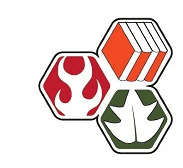Fire Ecology & Effects
View brief.
Rangelands worldwide are essential for carbon sequestration, water retention, and habitat to name a few critical benefits. Prescribed fire is used to benefit vegetation and soil and reduce fuels on rangeland sites. What hasn’t been clear is how burning on rangelands may affect microbes in the soil, which are responsible for breaking down woody material. Also missing was an understanding of how the insects that typically call rangelands home respond to these burns.
View factsheet.
Archaea, bacteria, fungi, and viruses are organisms that comprise the soil microbiome and play a crucial role in the health of the world’s forests. The soil microbiome is vital in cycling important nutrients needed by vegetation (e.g., nitrogen), stabilizing soil organic matter, and forming essential symbioses with plants, such as the ectomycorrhizal fungi (EMF) that are obligate symbiotic partners of the conifer tree species that dominate forests of western North America.
Webinar recording.
The Oregon State University Extension Fire Program would like to take you on a journey of fire throughout Oregon. In this webinar, a team of regional fire specialists share diverse stories about how fire has shaped Oregon landscapes historically and currently. Understanding fire’s role in the place you live can help you become better prepared for fire and smoke, and more aware of your local ecological setting.
Burn Plan Event information and registration.
Event flyer to forward to others.
Join us in the field to discuss prescription burn planning, treatments, monitoring, and results with Duncan Leao, Steve Howell, and Ali Paulson, USFS. This is an informal discussion open to all.
View synthesis.
We performed a systematic review on the global responses of arthropods, birds, mammals, reptiles, and amphibians to different fire regimes. Specifically, we focused on assessing how fire severity, history, and frequency modulate the effect of fire on the richness and abundance of faunal communities. We conducted a systematic review of 566 papers retrieved from the Scopus database. Our selection criteria excluded studies without data on species richness or abundance. We also excluded studies without adequate controls and those without information about the fire regime of the study zone. After careful examination, we used data from 162 studies to perform a quantitative meta-analysis. From the 162 studies meeting our selection criteria, nearly 60% of the studies are from North America, 25% from Australia, 11% from Europe, and 4% from the tropics. According to the ecological role of fire, 90% of the studies were carried out in fire-dependent ecosystems (i.e., conifer forests, natural savannas, pastures). Finally, 40% of the studies analyzed birds, 22% mammals, and 20% arthropods. The meta-analysis of the available evidence indicates that fire history is an important modulator of animal richness and abundance. Whether negative or positive, animal responses depended on the time since the last fire event. Considering that short-term studies may not capture such a long-term effect on fauna, this translates to more challenges at implementing fire management strategies. Whether or not we can anticipate the impact of the fire will then depend on future efforts to implement long-term research.
Workshop website.
The 14th North American Forest Ecology Workshop (NAFEW) will take place June 24 – 27, 2024 in Asheville, NC
The format of the meeting will be different from past years, as we will kick off the meeting with all day field trips on Monday followed by a plenary talk in the evening. Sessions will be offered all day Tuesday, half day Wednesday, and all day Thursday. Local field trips will be offered Wednesday afternoon and workshops will occur throughout the week. A banquet is planned for Tuesday evening.
The Southwest Climate Adaptation Science Center, USDA Forest Service, and many other organizations are hosting a yearlong series of workshops and webinars to advance wildlife management relating to fire in the Southwest. This series will kick off with a two-part virtual workshop that will highlight case studies, emerging research, and more.
Day and time: January 23 @ 1-4 p.m. MST and January 24 @ 9-12 p.m. MST
To learn more and register, visit https://www.surveymonkey.com/r/3V7DW6Q.
View article.
Wildfire regimes are changing dramatically across North American deserts with the spread of invasive grasses. Invasive grass fire cycles in historically fire-resistant deserts are resulting in larger and more frequent wildfire. This study experimentally compared how single and repeat fires influence invasive grass-dominated plant fuels in the Great Basin, a semi-arid, cold desert, and the Mojave, a hyper-arid desert. Both study sites had identical study designs. In the summer of 2011, we experimentally burned half of each experimental block, the other half remaining as an unburned control. Half of the burned plots were reburned 5 years later to simulate increasing burn frequency. We estimated non-woody plant biomass, cover, and density in plots from 2017 to 2020.
In the southwestern United States, non-native grass invasions have increased wildfire occurrence in deserts and the likelihood of fire spread to and from other biomes. Wildfires were historically small and infrequent in the warm deserts of western North America, with minimal impact on the desert vegetation. In recent decades, the fire regime has shifted with the spread of non-native grasses. Fires are increasingly burning large areas in desert habitats, largely driven by grassification, the physiognomic conversion of shrublands to grassland by non-native grass invasions. This conversion is especially concentrated at the upper elevational and northern latitudinal boundaries of the Sonoran Desert, which are transition zones to adjacent fire-prone biomes.










